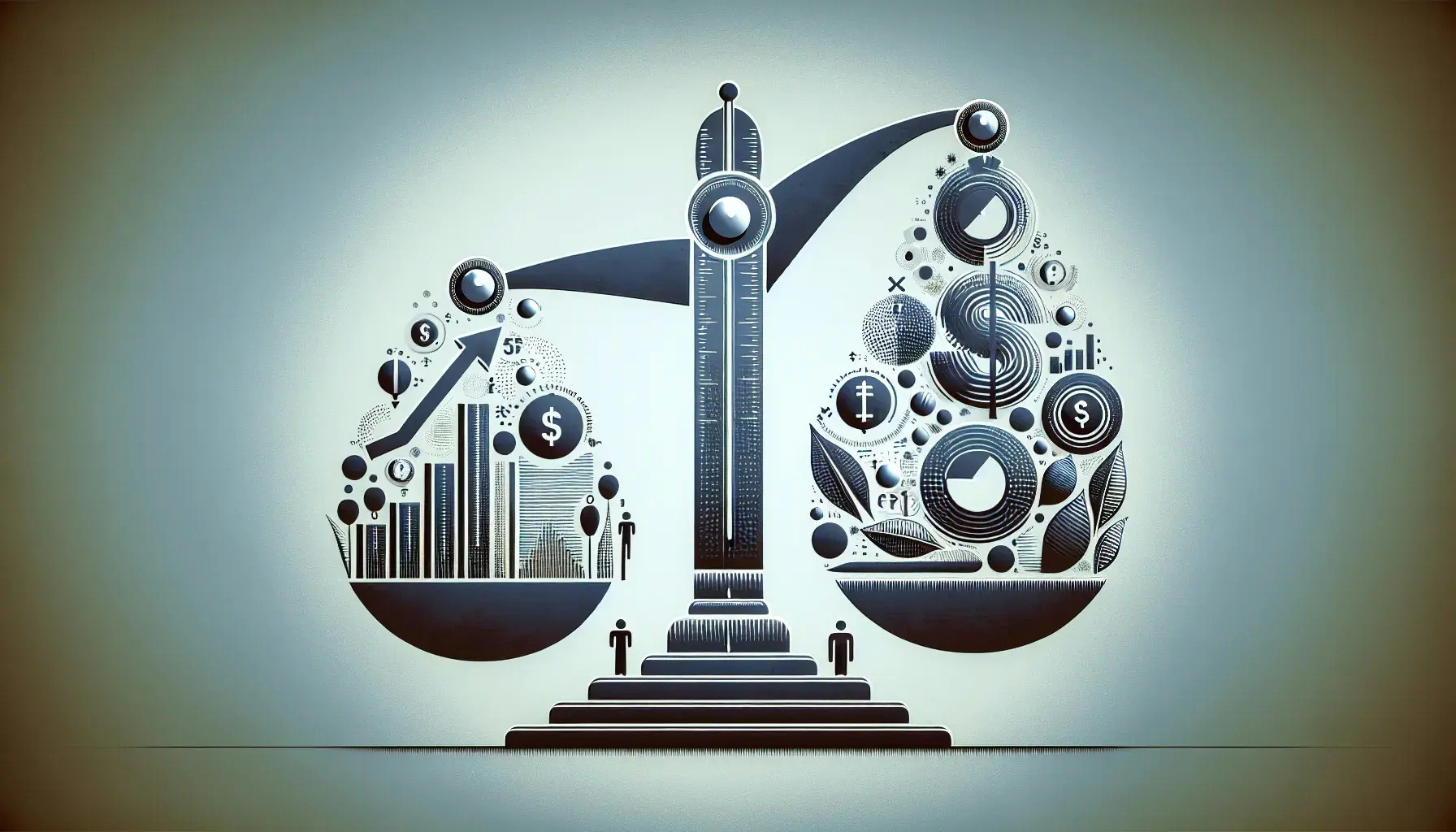Inflation, a term that often sends shivers down the spines of economists and investors alike, has a profound influence on the financial landscape. One area where its effects are particularly noticeable is in the realm of interest rates. This blog post delves into the intricate relationship between inflation and interest rates, shedding light on how changes in the former can significantly alter the latter.
Understanding Inflation: A Primer
Inflation, in its most basic form, refers to the rate at which the general level of prices for goods and services is rising. As inflation increases, every dollar you own buys a smaller percentage of a good or service. The value of a dollar does not stay constant when there is inflation. The value of a dollar is observed in terms of purchasing power, which is the real, tangible goods that money can buy.
When inflation goes up, there is a decline in the purchasing power of money. For example, if the inflation rate is 2% annually, then theoretically a $1 pack of gum will cost $1.02 in a year. After inflation, your dollar can't buy the same goods it could beforehand.
There are several different factors that could contribute to rising inflation. Demand-pull inflation occurs when demand for goods and services exceed their supply. Cost-push inflation is the decreased supply of goods and services, which can be due to increased prices of inputs. Built-in inflation is the expectation of future inflation that can cause workers to demand more wages, which can lead to an inflationary cycle.
The Role of Interest Rates in the Economy
Interest rates play a crucial role in the overall economy. They are a tool used by central banks to control inflation and stabilize the economy. When interest rates are high, borrowing costs increase. This discourages people from borrowing and slows economic growth. Conversely, when interest rates are low, borrowing costs decrease, encouraging spending and investment, which can stimulate economic growth.
Interest rates also affect the exchange rate. A higher interest rate attracts foreign investors, which increases the demand for the country's currency and raises its value. On the other hand, a lower interest rate discourages foreign investment, which decreases the demand for the currency and lowers its value.
Furthermore, interest rates impact the stock market. Higher interest rates make borrowing more expensive for companies, which can decrease their profits and lower their stock prices. Lower interest rates, on the other hand, make borrowing cheaper, which can increase profits and raise stock prices.
The Connection between Inflation and Interest Rates
Inflation and interest rates share a complex, intertwined relationship. Central banks often increase interest rates to keep inflation in check. When inflation is high, a central bank will raise interest rates to slow the economy and reduce inflation. This happens because higher interest rates mean higher borrowing costs, which can decrease spending and slow inflation.
Conversely, when inflation is low, a central bank may cut interest rates to stimulate the economy and increase inflation. Lower interest rates mean lower borrowing costs, which can encourage spending and raise inflation.
However, the relationship between inflation and interest rates is not always straightforward. Other factors, such as economic growth, unemployment, and international economic conditions, can also influence interest rates.
The Real-World Implications of Inflation on Interest Rates
The impact of inflation on interest rates has significant real-world implications. For savers, high inflation can erode the value of money, while high interest rates can provide a better return on savings. For borrowers, high inflation can reduce the real burden of debt, while high interest rates can increase the cost of borrowing.
For investors, the impact of inflation on interest rates can affect the value of investments. High inflation can erode the value of fixed-income investments, while high interest rates can make these investments more attractive. Conversely, low inflation can preserve the value of fixed-income investments, while low interest rates can make these investments less attractive.
For businesses, the impact of inflation on interest rates can affect profitability. High inflation can increase costs, while high interest rates can increase borrowing costs. Conversely, low inflation can keep costs stable, while low interest rates can reduce borrowing costs.
Mitigating the Impact of Inflation on Interest Rates
There are several strategies that individuals and businesses can use to mitigate the impact of inflation on interest rates. One strategy is to invest in assets that tend to increase in value during periods of high inflation. These can include commodities, real estate, and stocks.
Another strategy is to lock in interest rates on loans during periods of low inflation. This can protect against future increases in interest rates. Conversely, during periods of high inflation, it may be beneficial to wait to lock in interest rates in anticipation of future decreases.
For businesses, one strategy is to pass on increased costs to consumers during periods of high inflation. However, this can be risky if consumers are sensitive to price increases. Another strategy is to increase efficiency to reduce costs.
The Future of Inflation and Interest Rates
The future of inflation and interest rates is uncertain. Economic conditions, government policies, and global events can all influence inflation and interest rates. However, by understanding the relationship between inflation and interest rates, individuals and businesses can make more informed decisions and better prepare for the future.
One thing is certain: inflation and interest rates will continue to play a crucial role in the global economy. As such, it is essential to keep a close eye on these two economic indicators and understand how they can impact personal finances and business operations.
Wrapping Up: Inflation and Interest Rates
Inflation and interest rates are two economic factors that have a profound impact on our daily lives. Understanding their relationship and the effects they can have on the economy is crucial for anyone interested in finance. While the future of inflation and interest rates is uncertain, being informed and prepared can help individuals and businesses navigate the ever-changing economic landscape.

